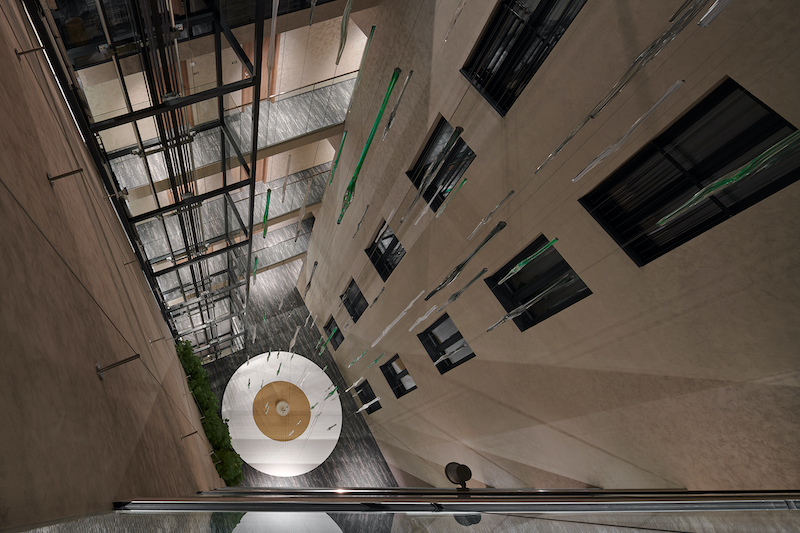MARTIN ROSOL
Martin Rosol came to the United States in 1988 to pursue his career as a glass sculptor, a path unavailable to him due to the political regime in Czechoslovakia. Rosol, like many Czech glassworkers, learned his trade in the Arts and Crafts Centre. Although the arrangement provided employment for many, it did not provide the young artist with the degree required by the old regime to sell art. Rosol, who had been designing and making sculptures while working in a glass factory, therefore shipped his work out of the country. Soon, his sculptures were being exhibited in Europe and in the United States, and in 1981 he was awarded the Bavarian State Prize for Glass Sculpture in Munich. In 1986 he left Czechoslovakia for Austria, and two years later, he came to the United States. Rosol’s sculptures impress with their elegant design and craftsmanship, and are exhibited and sold around the world.
Foucault Pendulum
The pendulum is named after French physicist J.B. León Foucault, who first used the pendulum in 1851 to demonstrate the Earth’s rotation. The pendulum is suspended in the atrium at 12 meters, weighs about 100 kilos, and is constructed of 7 glass circles. It was designed by Martin Rosol and manufactured by Glass Industries in Rochester, NY. The pendulum is a theme evoking continuous space-time movement and accentuates the artist’s statement. It represents movement in indomitable time, which cannot be neither caught, diverted, nor stopped. The time is relentless, but just. Martin Rosol’s pendulum conveys the message that art has invariable value, resisting the inexorable law of time.







